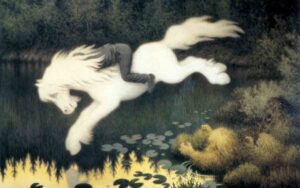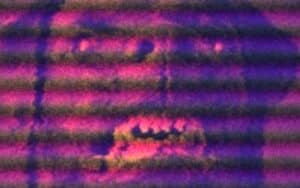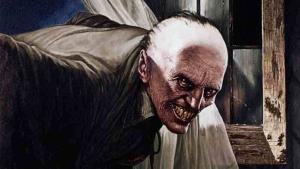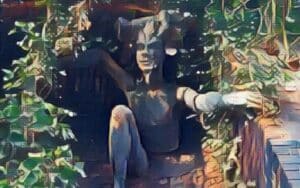Beware the shadows of Leicestershire, for within them lurks Black Annis, the blue-faced hag with iron claws and a taste for human flesh.
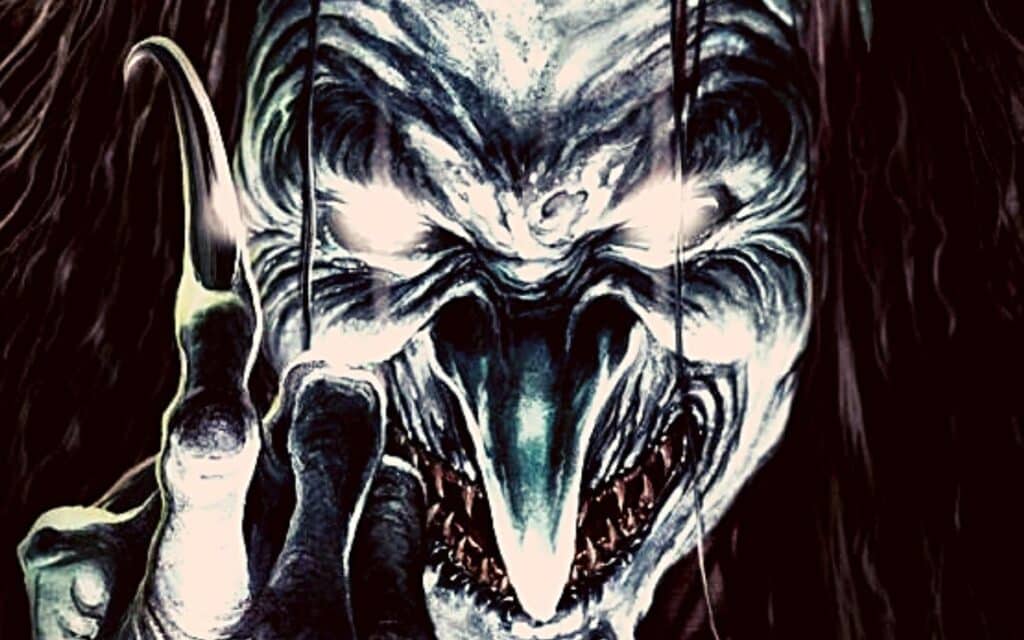
Deep in the English countryside of Leicestershire, a terrifying figure lurks in the shadows – Black Annis, also known as Black Agnes or Black Anna.
This bogeyman – or more appropriately bogeywoman – of English folklore is imagined as a blue-faced hag or witch with iron claws and a taste for human flesh, especially that of innocent children.
Her haunting ground is said to be a cave in the Dane Hills, with a great oak tree marking the entrance.
Legend has it that she used her iron claws to dig her cave out of the side of a sandstone cliff, making herself a home there which is known as Black Annis’ Bower Close.
At night, Black Annis ventures out from her lair to hunt for unsuspecting children and lambs to eat, tanning their skins by hanging them on a tree before wearing them around her waist.
She even reaches inside houses to snatch people, causing parents to warn their children that Black Annis would get them if they did not behave.
She is also known to hide in the branches of her oak tree, waiting to pounce upon her unsuspecting prey.
When Black Annis grinds her teeth, people can hear her, giving them time to bolt their doors and keep away from the window.
Cottages in Leicestershire were purposely built with small windows so that Black Annis could only get a single arm inside.
When she howls, she can be heard five miles away, prompting the cottagers to fasten skins across the window and place protective herbs above it to keep themselves safe.
The Origins of Black Annis
The origins of Black Annis are shrouded in mystery, with several possible theories.
Some claim that the origin can be found in Celtic mythology based on Danu (or Anu) or it may derive from Germanic mythology (see Hel). Others suggest that the legend may go back to the mother goddess of ancient Europe which was thought of as a devourer of children.
It has even been suggested that the legend may derive from a popular memory of sacrifice to an ancient goddess.
Despite the many theories, respected British folklorist and historian Ronald Hutton believes that the Black Annis legend was based on a real person.
Her named Agnes Scott, a late medieval anchoress (a bit like a hermit) who lived a life of prayer in a cave in the Dane Hills and was buried in the churchyard in Swithland.
The memory of Scott may have been distorted into the image of Black Annis either to frighten local children or due to the anti-anchorite sentiment that arose from the Protestant Reformation.
Customs surrounding Black Annis
Traces of Black Annis can still be found in Leicestershire.
She has been represented in monstrous cat form and the legend led to a local ritual in early spring when a dead cat would be dragged before a pack of hounds in front of her bower to celebrate the end of winter. This custom died out at the end of the 18th century.
Another tradition stated that Black Annis (in the form of Cat Anna) lived in the cellars beneath Leicester Castle and that there was an underground passage extending from the cellars to the Dane Hills along which she ran.
In 1837, a play called Black Anna’s Bower, or the Maniac of the Dane Hills was performed at the Leicester Theatre.
The plot involved the murder of a landlady of the Blue Boar Inn, in which Black Anna played a part similar to that of the witches in Macbeth.
Are you from Leicestershire and remember being told of Black Annis growing up? Tell us about it in the comment section below!


